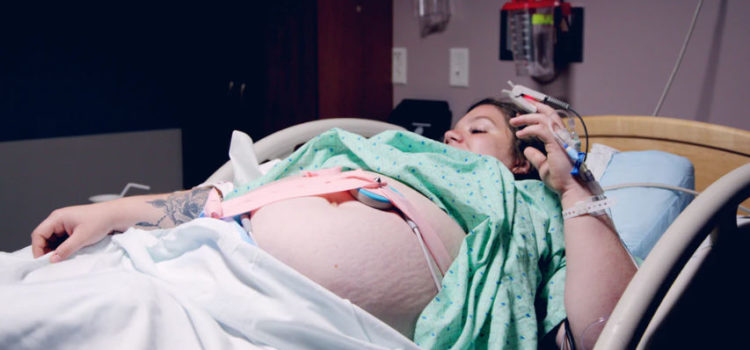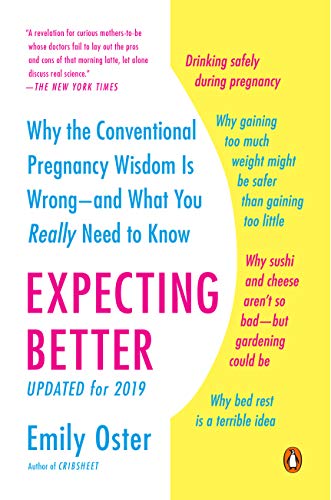

This article is an excerpt from the Shortform summary of "Expecting Better" by Emily Oster. Shortform has the world's best summaries of books you should be reading.
Like this article? Sign up for a free trial here .
This scary chapter goes through major complications of pregnancy in the third trimester, their consequences, and treatments.
Learn about the conditions of high risk pregnancy, including placenta previa, gestational diabetes, and placental abruption.
(Shortform note: Oster did not include the baseline rates for these and risk factors, so we did the research and added them here (thus, any inaccuracies are not the book’s fault). Mercifully, the risk for any grave condition is usually <1%.)
Generally, if a particular complication happens in your first pregnancy, it’s more likely to happen in future pregnancies compared to other women.
Placenta Previa
What: Placenta covers the cervix, partially or fully.
Rate: 0.5%
Risk Factors
- Maternal age > 40 and < 20
- Prior C-section
- Prior abortion
Consequences
- Vaginal bleeding with potential for hemorrhage
- Preterm birth
Management
- Most self-resolve
- If continues to term, C-section around 36 weeks
(Note the vicious cycle here – placenta previa leads to C-sections which increases risk of placenta previa)
Placental Abruption
What: Placenta detaches from the uterine wall
Rate: 0.5%
Risk Factors
- Maternal trauma
- Pre-eclampsia
- Chronic hypertension
- Maternal age > 40 and < 20
Consequences
- Painful contractions and vaginal bleeding
- Preterm birth
- Fetal growth restriction
- Need for C-section
Management
- If full-term, deliver baby
- If preterm, depends on severity of abruption
Gestational Diabetes
What: Diabetes diagnosed during pregnancy
Rate: 3-9%
Risk Factors
- Obesity and overweight
- Family history of type 2 diabetes
- Maternal age > 35
Consequences
- Higher risk of macrosomia (large for gestational age, > 8lb 13oz at birth)
- Delivery may need instruments or C-section
- Risk for stillbirth, neonatal metabolic problems
Management
- Glucose monitoring and control
Rh Alloimmunization
What: Baby has Rh+ blood, Mom has Rh-. Mother produces antibodies that can cross placenta and lead to destruction of fetal red blood cells.
Rate: 0.1%
Risk Factors
- Requirement: mother must be Rh- and father is Rh+ (homozygous or heterozygous)
- Amniocentesis/CVS causes blood mixing
- Bleeding in pregnancy
- Previous pregnancies with Rh incompatibility (first baby is less at risk)
Consequences
- Risk of fetal anemia and hyperbilirubinemia
Management
- Rhogam shot at 28 weeks and after delivery. This destroys fetal red blood cells before the mother can develop immunity to them. This dramatically reduces risk of Rh disease.
Cervical Insufficiency/Incompetence
What: Painless dilation of the cervix before reaching term
Rate: 1-2%
Risk Factors
- History of cervical biopsy
- Repeated procedures to cervix during pregnancy
- Significant trauma to cervix
Consequences
- 2nd trimester miscarriage
- Very preterm birth
Management
- Cervical length screening
- Progesterone treatment
- Cerclage (sutures above cervix opening) at weeks 14-16
Fetal Growth Restriction
What: Poor fetal growth, usually due to poor nutrition or inadequate oxygen to fetus
Rate: 3-10%
Risk Factors
- Poor weight gain
- Poor nutrition
- Smoking
- Alcohol
- Diabetes
- Hypertension, cardiovascular disease
Consequences
- Low birth weight
- Preterm birth
- Still birth
- Metabolic, breathing problems
Management
- Continual evaluation of growth
- May induce early delivery if baby would be better off outside mother
Preeclampsia, Eclampsia, HELLP Syndrome
What: High blood pressure (>140/90) with increased protein in urine. Symptoms include headache, abdominal pain, sudden weight gain.
- Eclampsia involves seizures resulting from multi-organ failure, vascular permeability, and cerebral edema.
- HELLP = hemolysis, elevated liver enzymes, and low platelets.
- Possible mechanism involves abnormal vascularization of placenta, causing hypoxia and release of factors causing inflammation.
Rate: 3-5%
Risk Factors
- Obesity
- Hypertension
- Older age
- Diabetes
- Mother >35 years
Consequences
- Multi-organ failure
- Maternal and fetal death
Management
- Blood pressure management
- Aspirin
- Delivery of baby
Placenta Accreta
What: Placenta forms an abnormally firm and deep attachment to the uterine wall.
Rate: 0.3%
Risk Factors
Consequences
- Hemorrhage at time of delivery
- Damage to local organs
- Maternal death
Management
- C-section followed by hysterectomy
———End of Preview———

Like what you just read? Read the rest of the world's best summary of "Expecting Better" at Shortform . Learn the book's critical concepts in 20 minutes or less .
Here's what you'll find in our full Expecting Better summary :
- Why much parenting advice you hear is confusing or nonsense
- The most reliable way to conceive successfully
- How much alcohol research shows you can drink safely while pregnant (it's more than zero)
- The best foods to eat, and what foods you really should avoid






